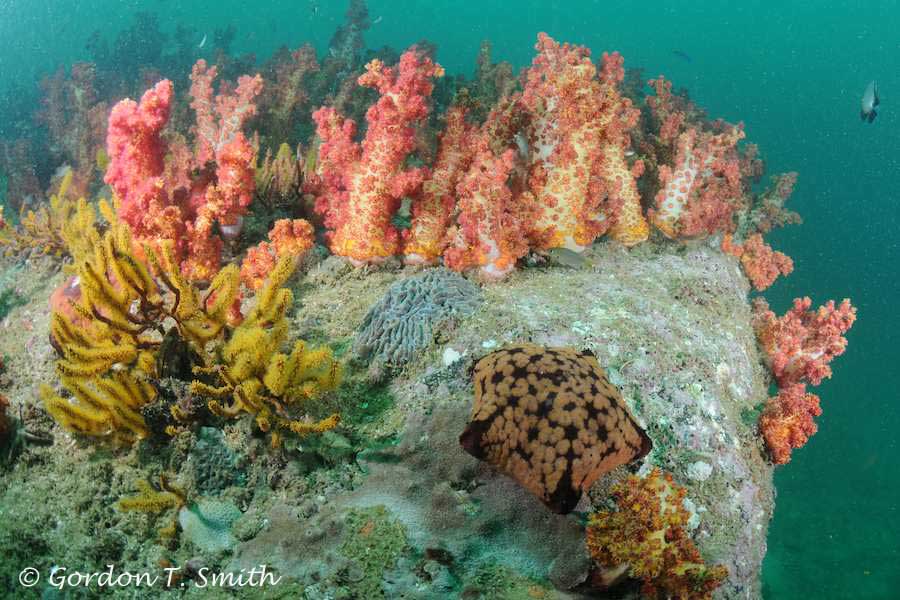
ACCESS: BOAT
EXPERIENCE LEVEL: BEGINNER TO ADVANCED
MAXIMUM DEPTH: 22M
DIVE PROFILE: MULTILEVEL DIVE
HAZARDS: SEA URCHINS, SCORPIONFISH, OCCASIONAL STRONG CURRENTS
LOCATION
Martini Rock is situated very close to Khorfakkan on the east coast of UAE (GPS N 25 20.123 E 56 22.882) and is probably one of the most visited dive sites by the east coast operators. Most weekends you will find several boats at this site.
Fortunately there is a mooring at this site so anchors are not required reducing damage to the area, and also avoiding accidents to those who may be below from dropping anchors. However occasionally the mooring is cut, and sometimes an anchor is required.
The site is suitable for divers of all levels from novice to the more experienced and a good multi level dive can be done here with still something to see on the safety stop at 6M, without having to hang on a line or float in the empty sea hanging on to your SMB, which every diver should carry.
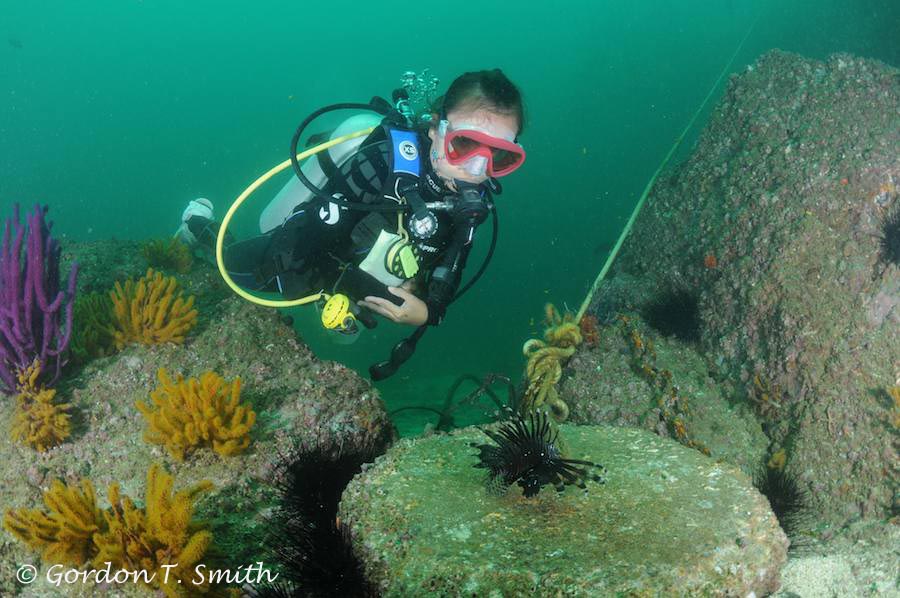
Currently the mooring line is anchored at around 13M (depending on tides), and following the rock on the left hand side (counter clockwise) the depth drops to around 22M at the outer (eastern) side.
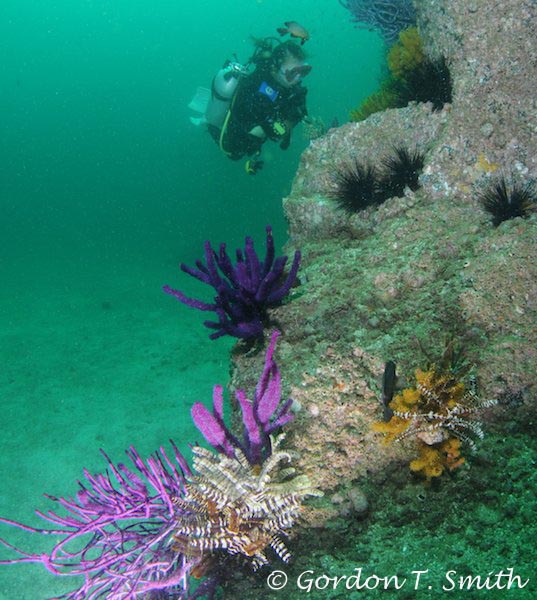
Temperatures this year have been below the norm, and rather cool thermoclines down to 22C are have been recently experienced despite air temperatures in the high 30s and surface water temperatures around 28C. I for one am getting cold after 30 minutes and will soon be donning my 5mm suit. Call me a wimp, but I would rather be warm and comfortable than cold. Remember that cold diving without suitable protection can be a predisposition to decompression sickness.
The most noticeable thing about this site is the plethora of colourful orange, red and purple soft corals of Dendronephthya species in the upper section more about this later. Additionally there is a lot of blue and yellow whip coral as you go deeper, and it is worth inspecting these closely with a torch as many smaller interesting creatures inhabit them.
Around the rock, you will come across many Pillow Stars (Oreasteridae sp) as well as other smaller members of the starfish family, and occasionally a large Crown of Thorns (Acanthaster planci), which on close inspection might reveal some example of symbiosis with shrimps living in between the spikes.
Fish life is generally abundant with frequent shoals of gill-raker Mackerel seen swooping around along with rainbow fusiliers and snapper, frequently being chased and attacked by trevally or jackfish.
As this is a protected area, there are many groupers around, opportunistic predators, on the lookout for an easy meal. Lizardfish (Synodus sp) are also sitting waiting for something to swim past and launch themselves like torpedoes impaling their victims with their needle sharp teeth.
Plenty of scorpionfish (Scorpaenopsis oxycephalus) inhabit this site, and be very careful if you have to touch the rock for some reason, look carefully first otherwise you might be on a quick boat ride back to Khorfakkan. One thing to remember, most marine poisons are low temperature acting and by using warm water on the wound, the pain will subside as the heat breaks down the protein of the poison. However poison from a stonefish (Synanceia sp) can be fatal and will require an anti-venom.
There are also a few Lionfish (Pterois volitans) hanging around, and when disturbed they will spread their fins out and go in a head down position ready to defend themselves also with poisoned spines, be careful!
Predating on the scorpionfish are the moray eels, and you will find various species lurking in the Dendronephthya corals, which are also home to many smaller fish including the small boxfish (Ostracion meleagris) that dart around, their obscure non streamlined shape belying their ability to swim off very quickly.
On the sandy surrounds of the rock you will find plenty of gobies living in holes along with their live-in shrimp housecleaners (Alpheus sp). Sea Pens wafting in the current, and perhaps a ray or two half buried in the sand.
After about 20 minutes in the deeper side move slowly back towards the mooring line shifting to a shallower depth for your multi-level dive, and by monitoring your dive computer you will be rewarded with a longer time as air consumption will decrease when you ascend. Explore the small canyons, observe the Sergeant Majors (Abudefduf vaigiensis) laying their eggs (purple patches) and protecting them against other fish looking for a quick meal.
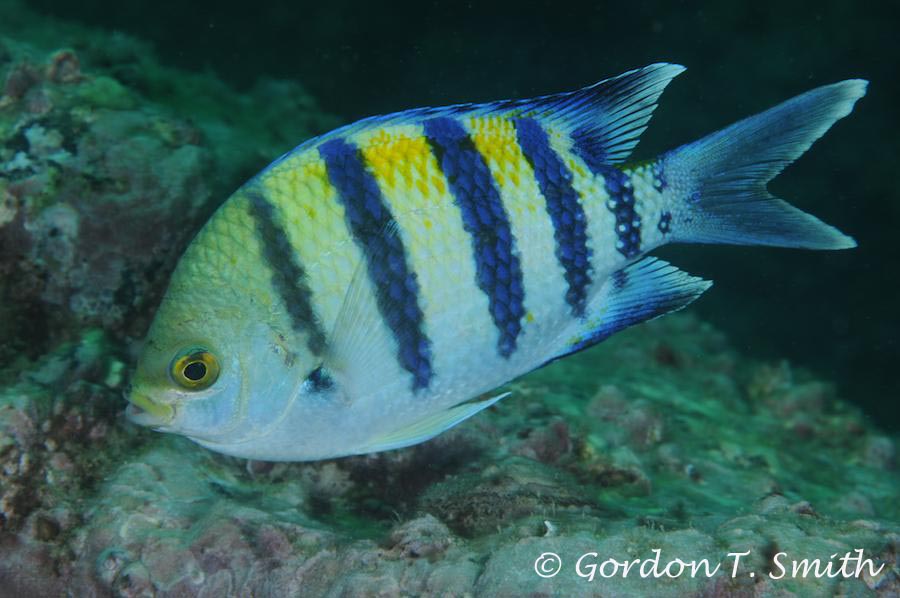
The Red Tooth Triggerfish (Odonus niger), swimming awkwardly or hiding in crevices, perhaps sleeping. You may also be approached by one of several larger fish, the Broomtail Wrasse (Cheilinus lunulatus) with their distinct yellow marking above their pectoral fins.
Take your time to dive this site, swim slowly, touch nothing and take only photographs, even in poor visibility this site has a lot to offer.
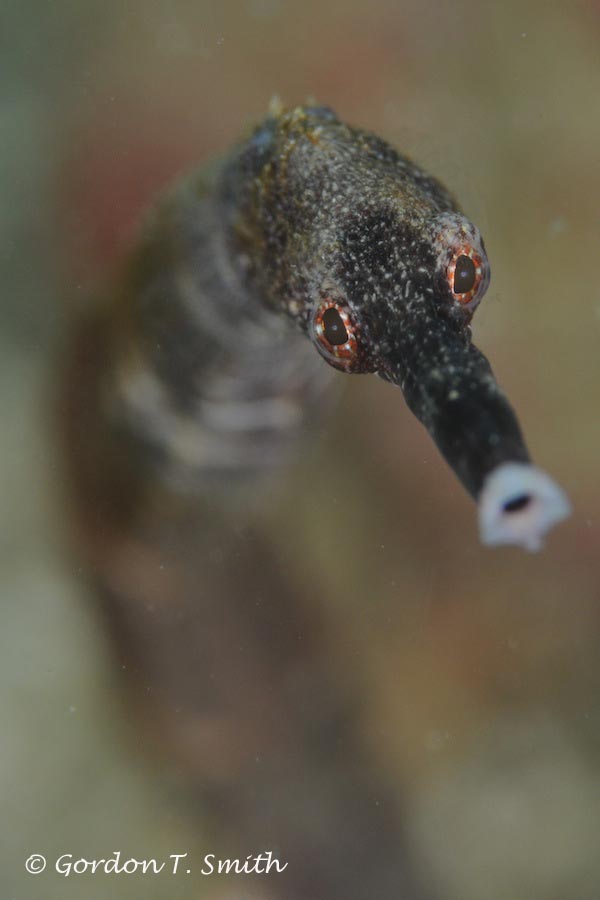
Gordon T. Smith
23rd September 2012
All photos copyright Gordon T. Smith 2004-12